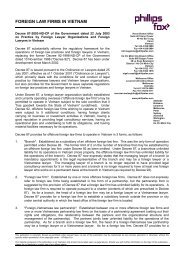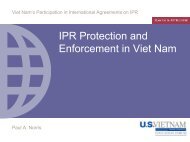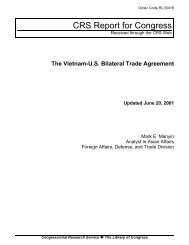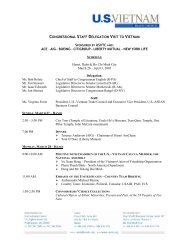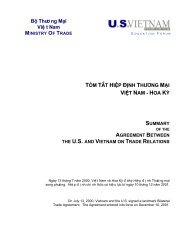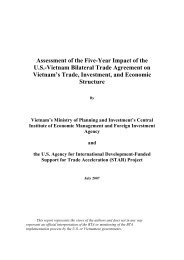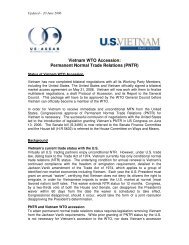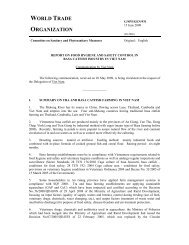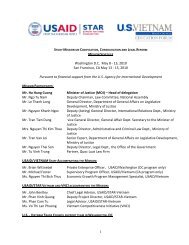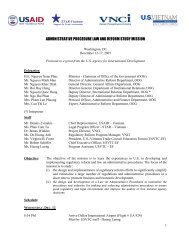Climate risks and adaptation in Asian coastal megacities: A synthesis
Climate risks and adaptation in Asian coastal megacities: A synthesis
Climate risks and adaptation in Asian coastal megacities: A synthesis
- No tags were found...
Create successful ePaper yourself
Turn your PDF publications into a flip-book with our unique Google optimized e-Paper software.
AnnexAVulnerability of KolkataMetropolitan Areato <strong>in</strong>creased Precipitation<strong>in</strong> a Chang<strong>in</strong>g <strong>Climate</strong>Global <strong>and</strong> RegionalContextStudy ObjectivesThis study sought to:Low-ly<strong>in</strong>g <strong>coastal</strong> areas are highly vulnerable toflood<strong>in</strong>g. A number of recent studies have shownthat <strong>coastal</strong> areas are vulnerable to a range of<strong>risks</strong> related to climate change, <strong>in</strong>clud<strong>in</strong>g <strong>coastal</strong>flood<strong>in</strong>g. Among these <strong>coastal</strong> areas, the IntergovernmentalPanel on <strong>Climate</strong> Change specificallyidentifies as hotspots the heavily urbanized <strong>megacities</strong><strong>in</strong> the low-ly<strong>in</strong>g deltas of Asia (IPCC 2007 b).Among <strong>Asian</strong> countries, India— with its 7,500 kmlong predom<strong>in</strong>antly low-ly<strong>in</strong>g <strong>and</strong> densely populatedcoastl<strong>in</strong>e—is particularly vulnerable. A recentglobal survey identified Kolkata <strong>and</strong> Mumbai asamong the top ten cities with high exposure toflood<strong>in</strong>g under the current climate change forecasts(Nicholls et al. 2008). The study also showsthat exposure will <strong>in</strong>crease <strong>in</strong> the future; by 2070,Kolkata is expected to lead the top 10 list <strong>in</strong> termsof population exposure.In response, the World Bank—<strong>in</strong> collaborationwith the <strong>Asian</strong> Development Bank (ADB) <strong>and</strong> theJapan Japan International Cooperation Agency(JICA)—launched four country-level studies forManila (led by JICA), Ho Chi M<strong>in</strong>h City (led byADB), <strong>and</strong> Bangkok <strong>and</strong> Kolkata (led by the WorldBank).■■■■■■■■■■■■Compile a database with past weather-related<strong>in</strong>formation <strong>and</strong> damage caused by extremeweather-related episodes.Determ<strong>in</strong>e scenarios most appropriate for assess<strong>in</strong>gthe impact of climate change.Develop hydrological, hydraulic, <strong>and</strong> stormdra<strong>in</strong>age models to identify vulnerable areas<strong>and</strong> determ<strong>in</strong>e physical damage estimates result<strong>in</strong>gfrom climate change effects.Assess monetary, social, <strong>and</strong> environmental impactsresult<strong>in</strong>g from such climate change events.Formulate <strong>adaptation</strong> proposals to cope withdamage aris<strong>in</strong>g from climate change effects.Strengthen local capabilities so that Kolkata’splann<strong>in</strong>g process can account for climate-relateddamage effects <strong>in</strong> analyz<strong>in</strong>g new projects.In this study, precipitation events <strong>in</strong> Kolkatabased on available historical ra<strong>in</strong>fall data for 25years were used as a basel<strong>in</strong>e (without climatechange) scenario. For model<strong>in</strong>g climate change,predictions for temperature <strong>and</strong> precipitationchanges <strong>in</strong> Kolkata <strong>in</strong> 2050 for A1FI <strong>and</strong> B1 emissionscenarios—from an analysis of 16 GCMs used for theIPCC Fourth Assessment Report—were provided by85



